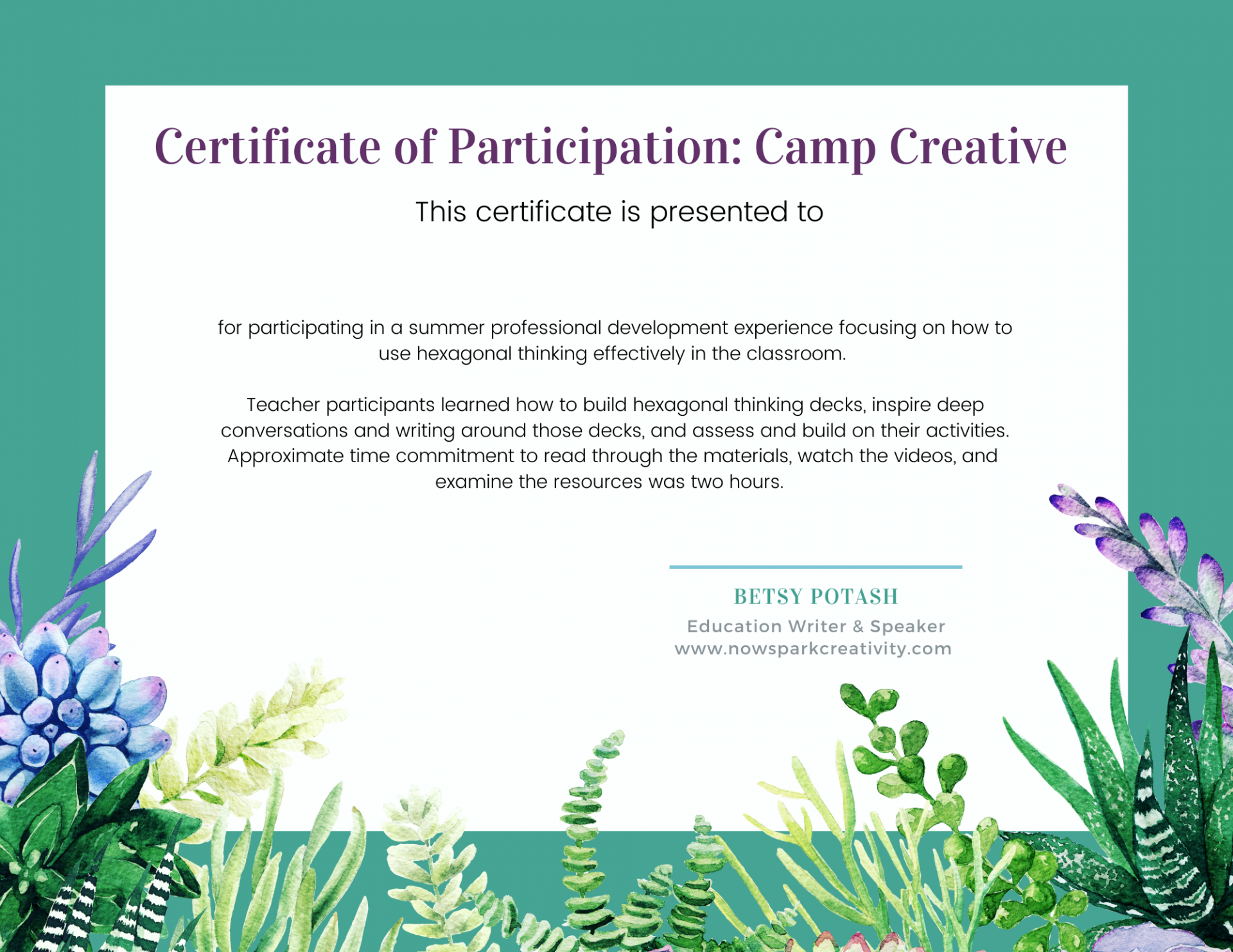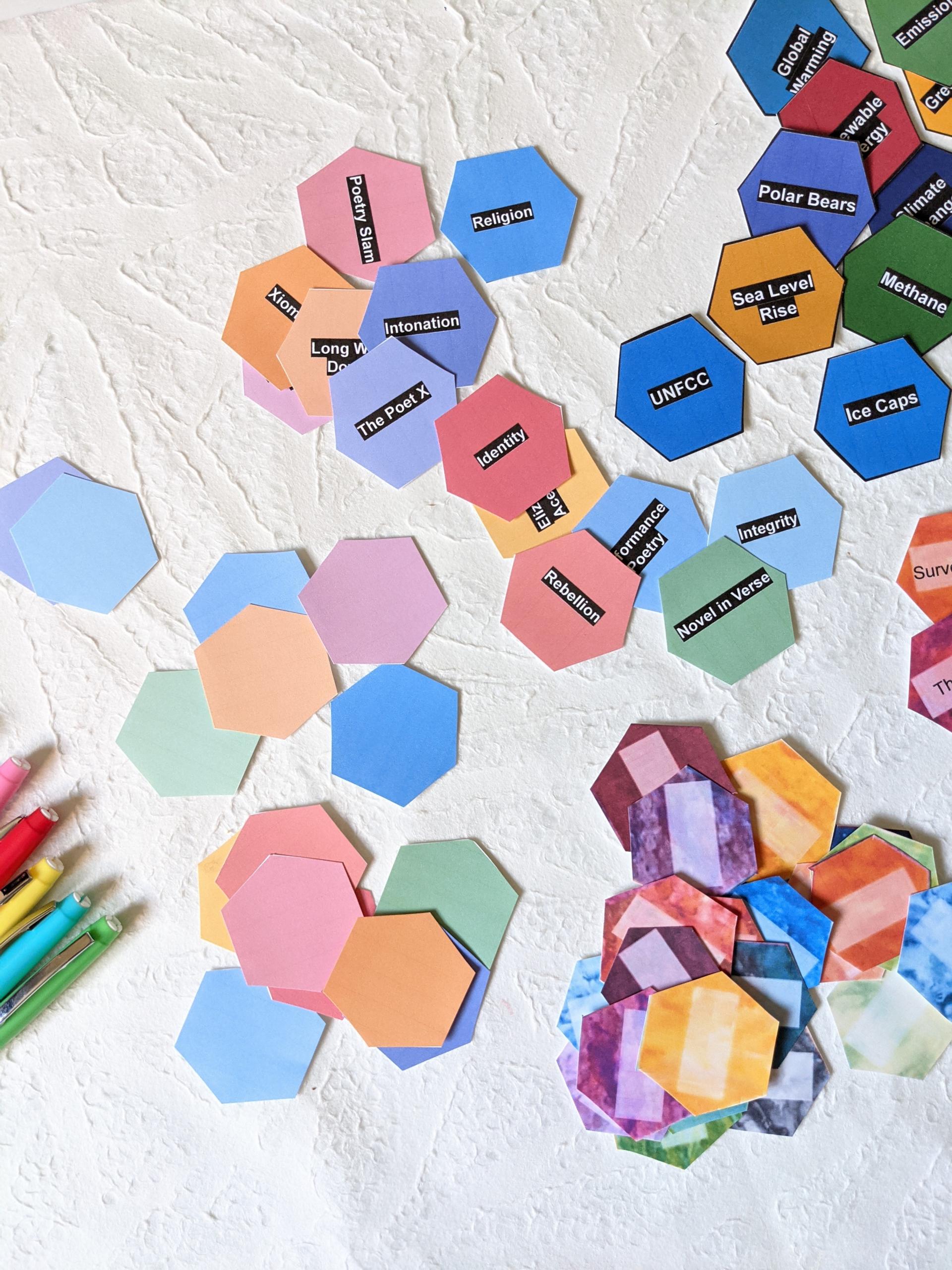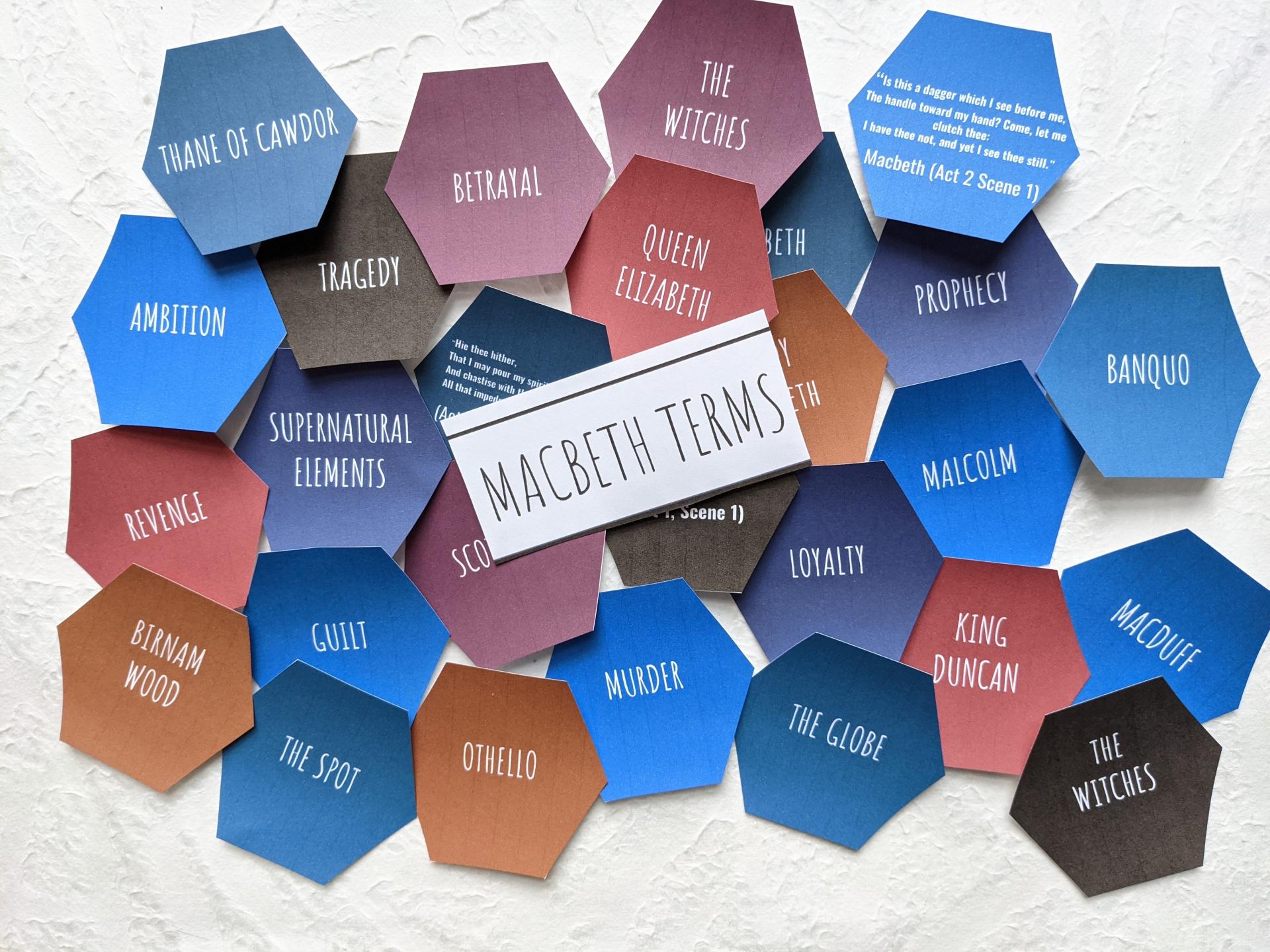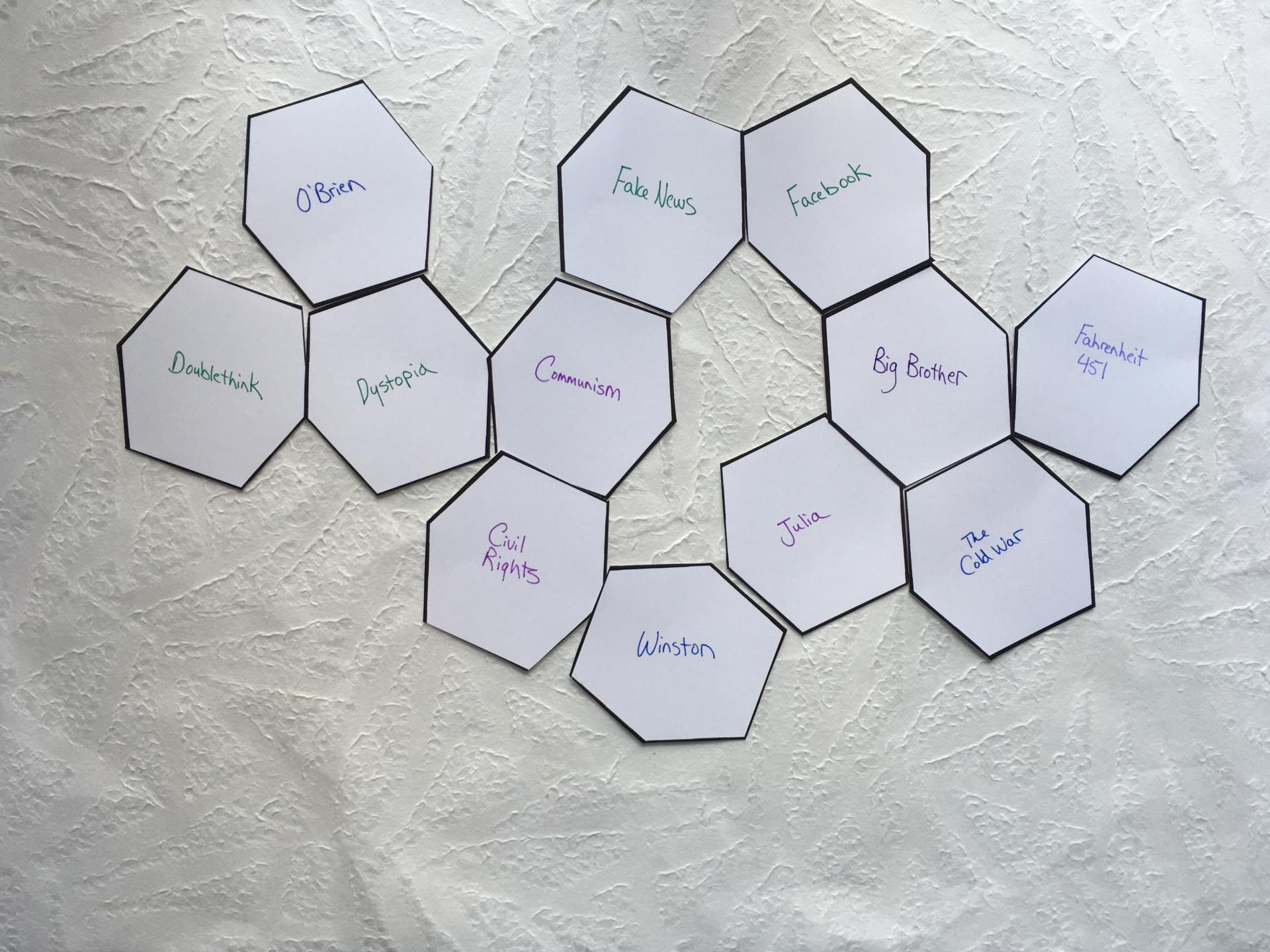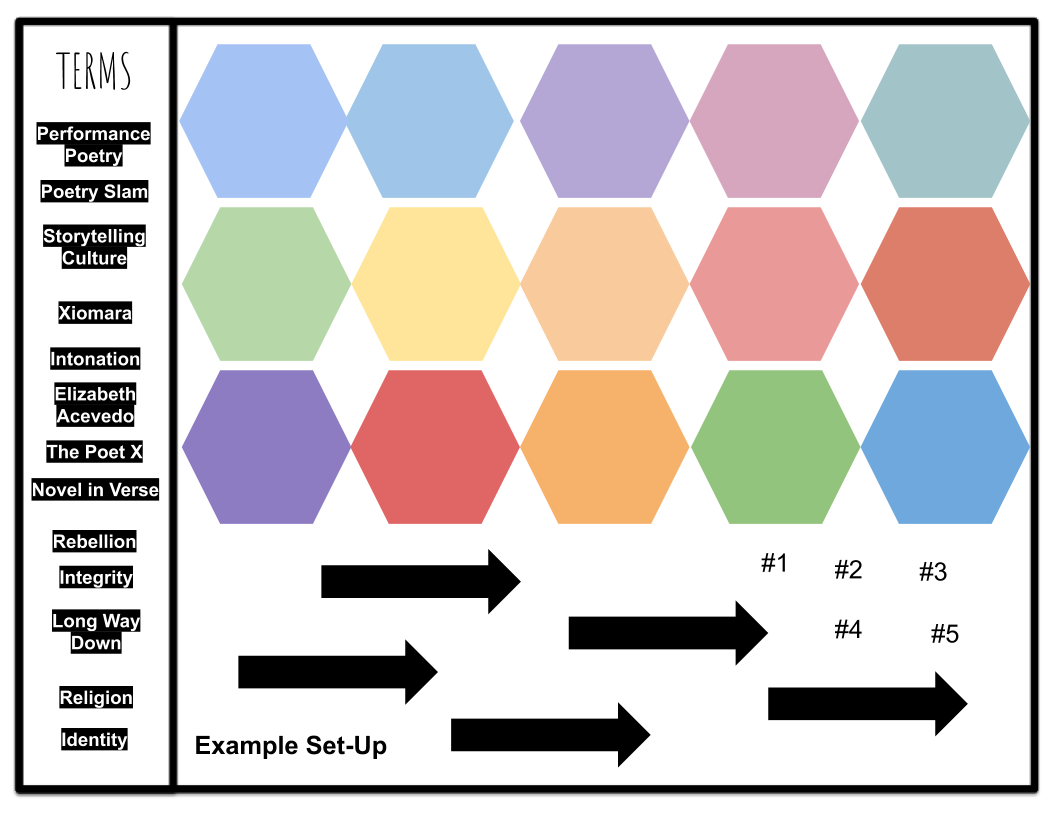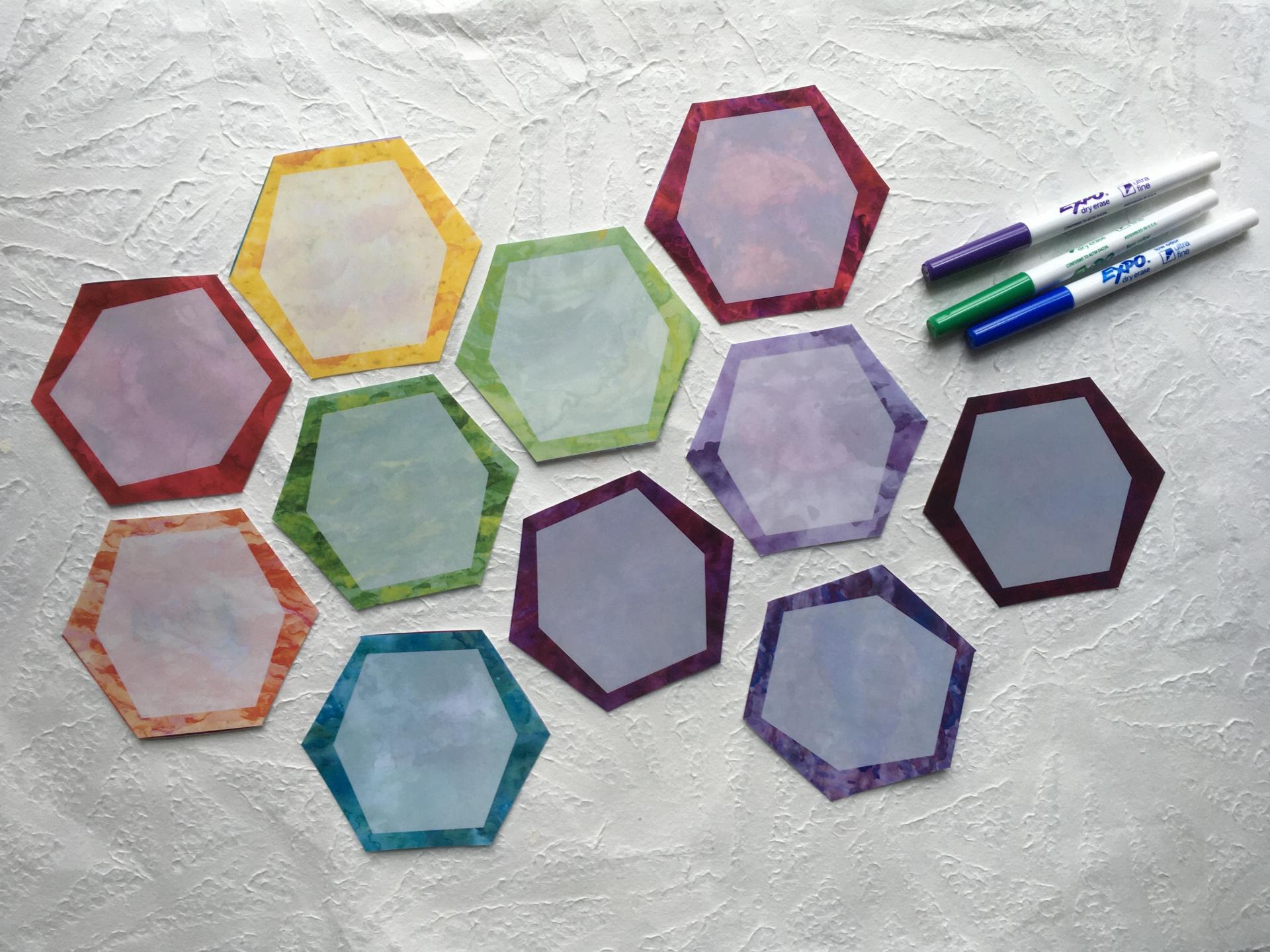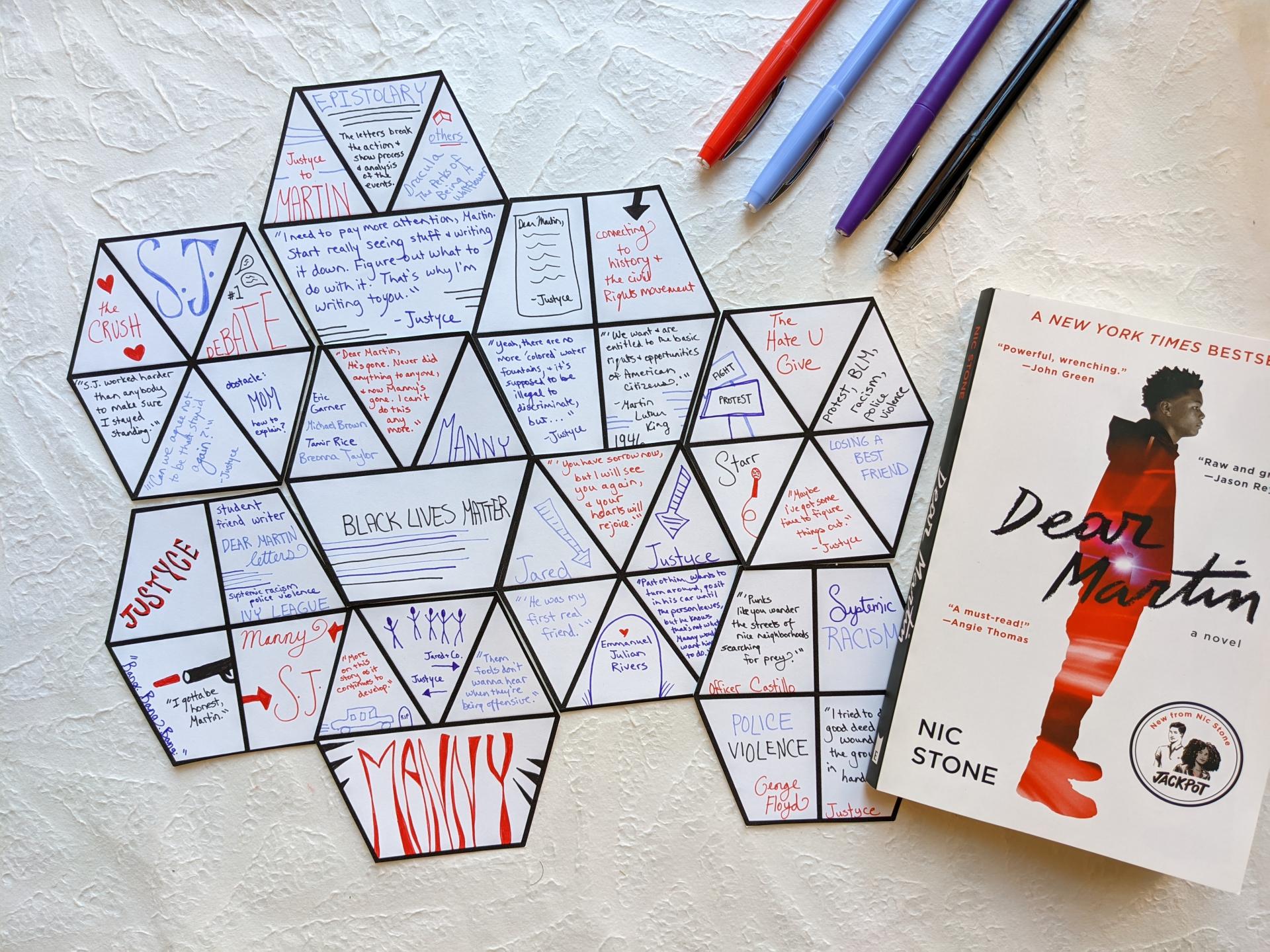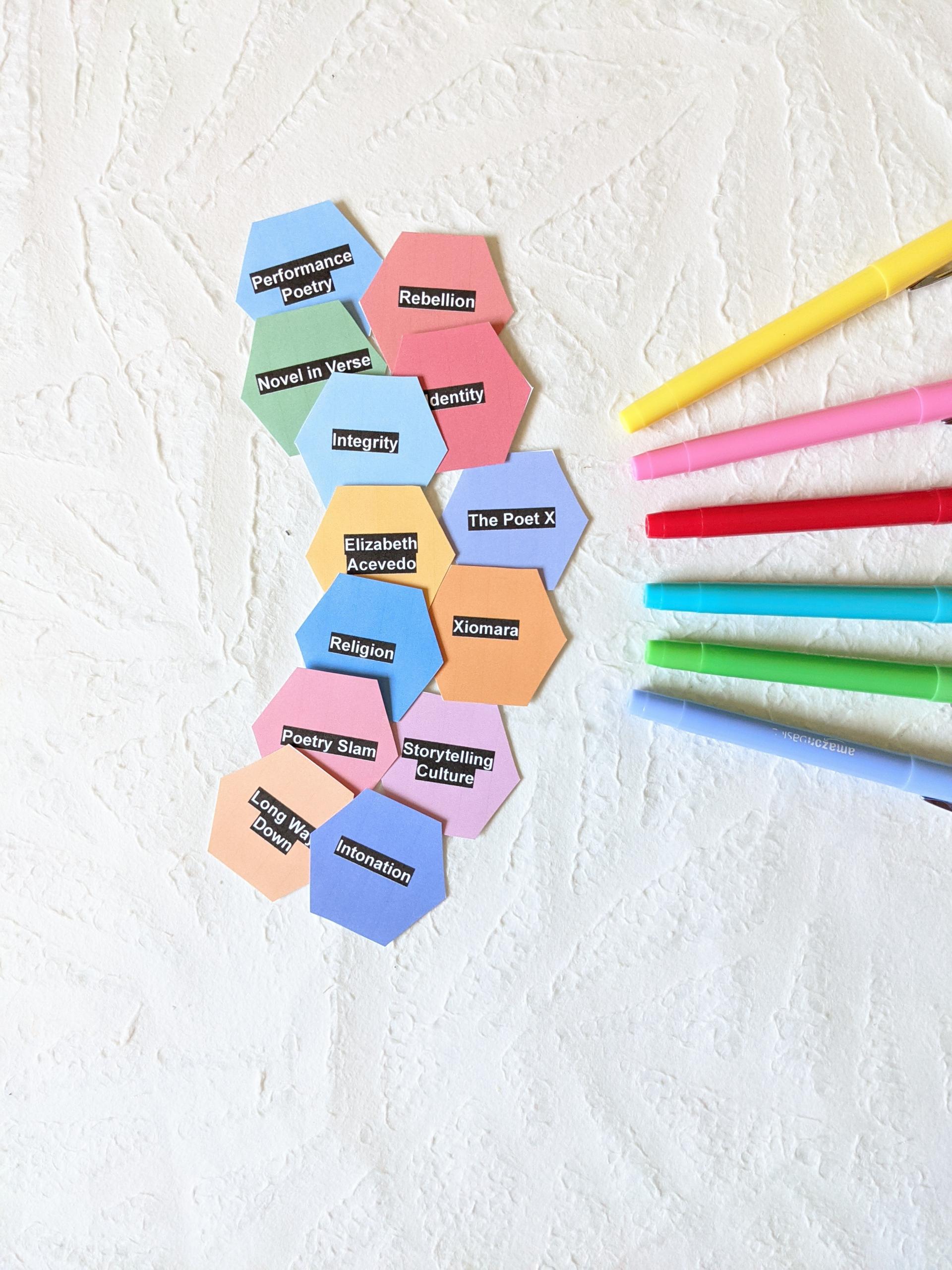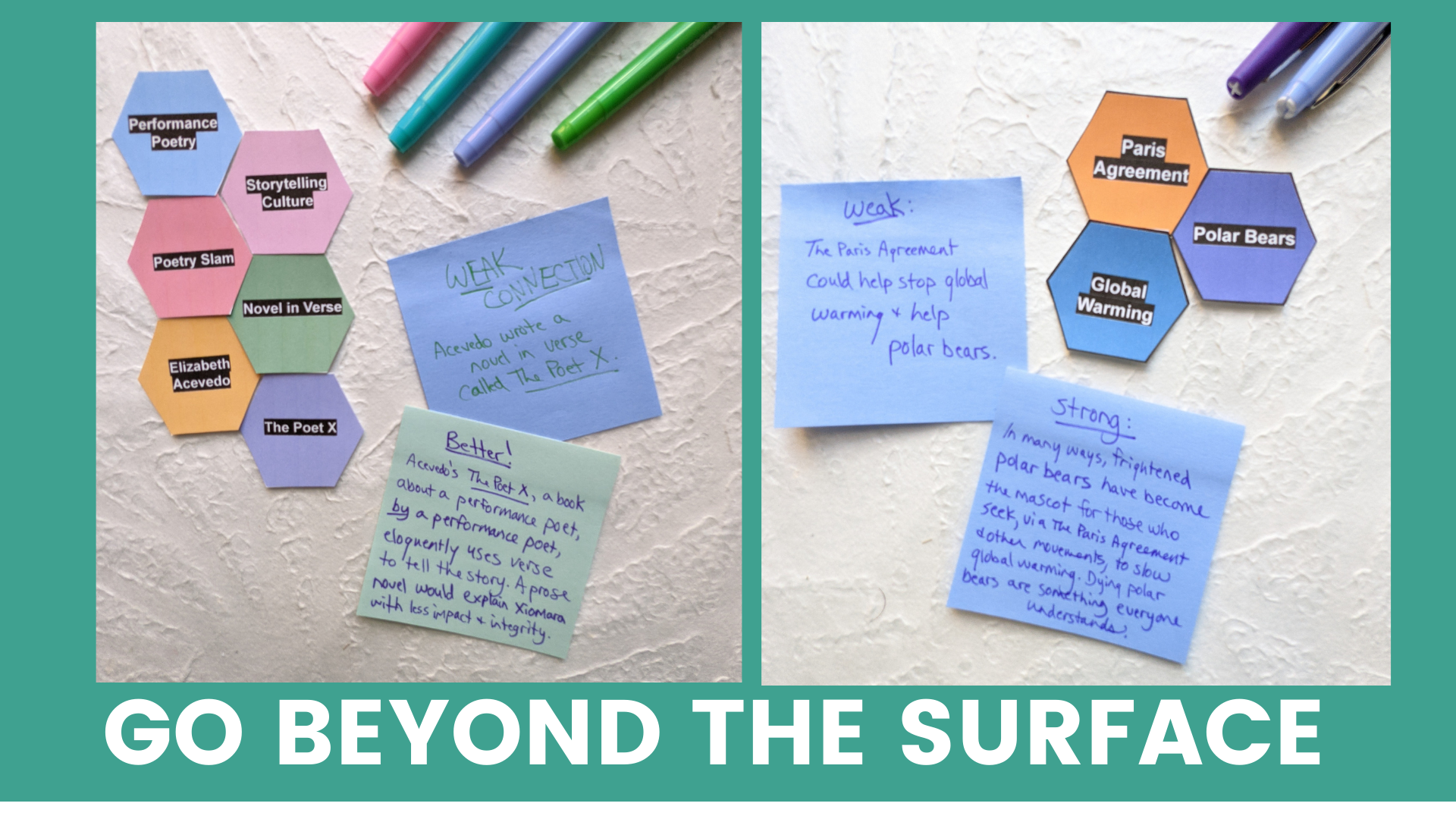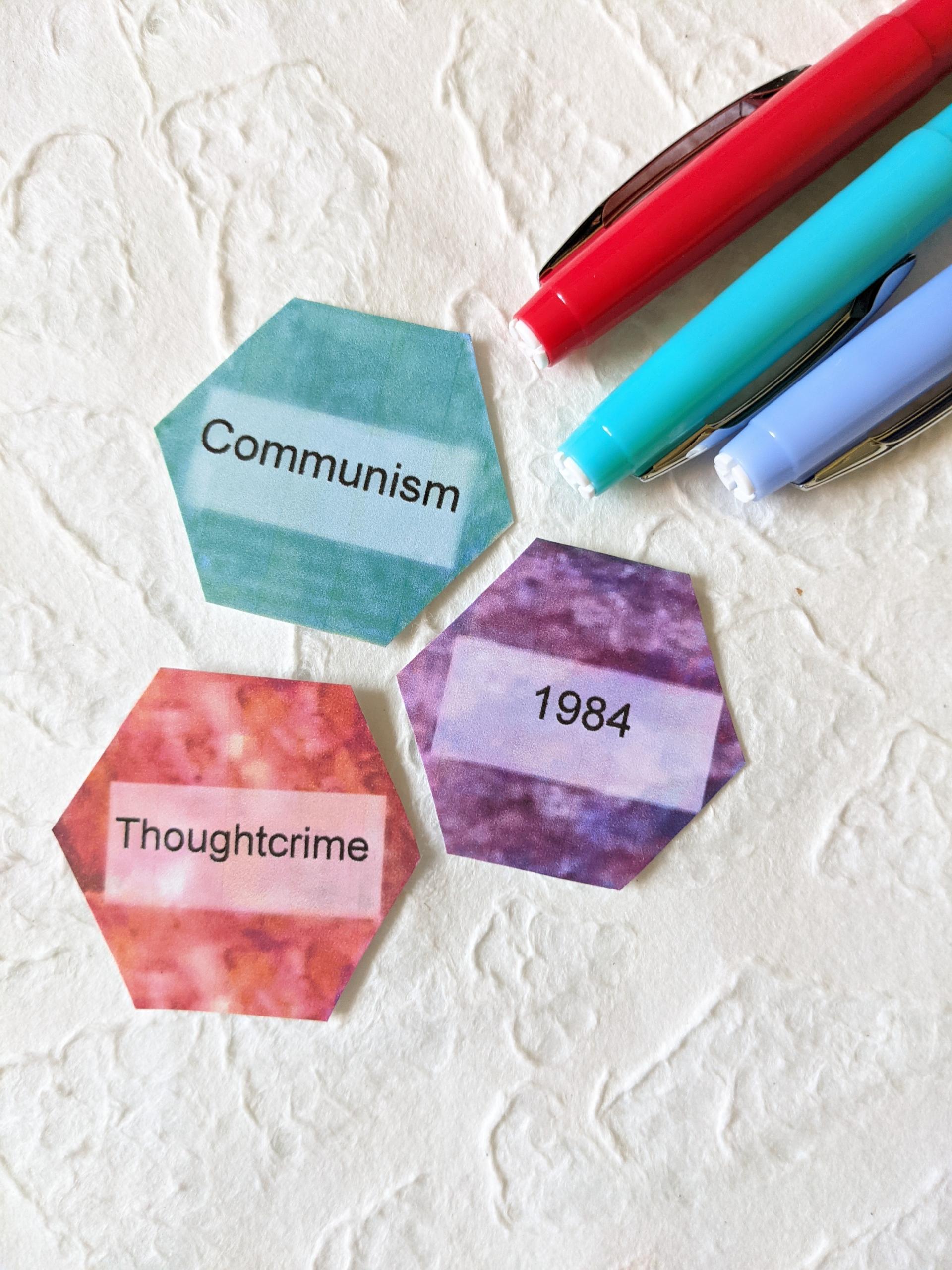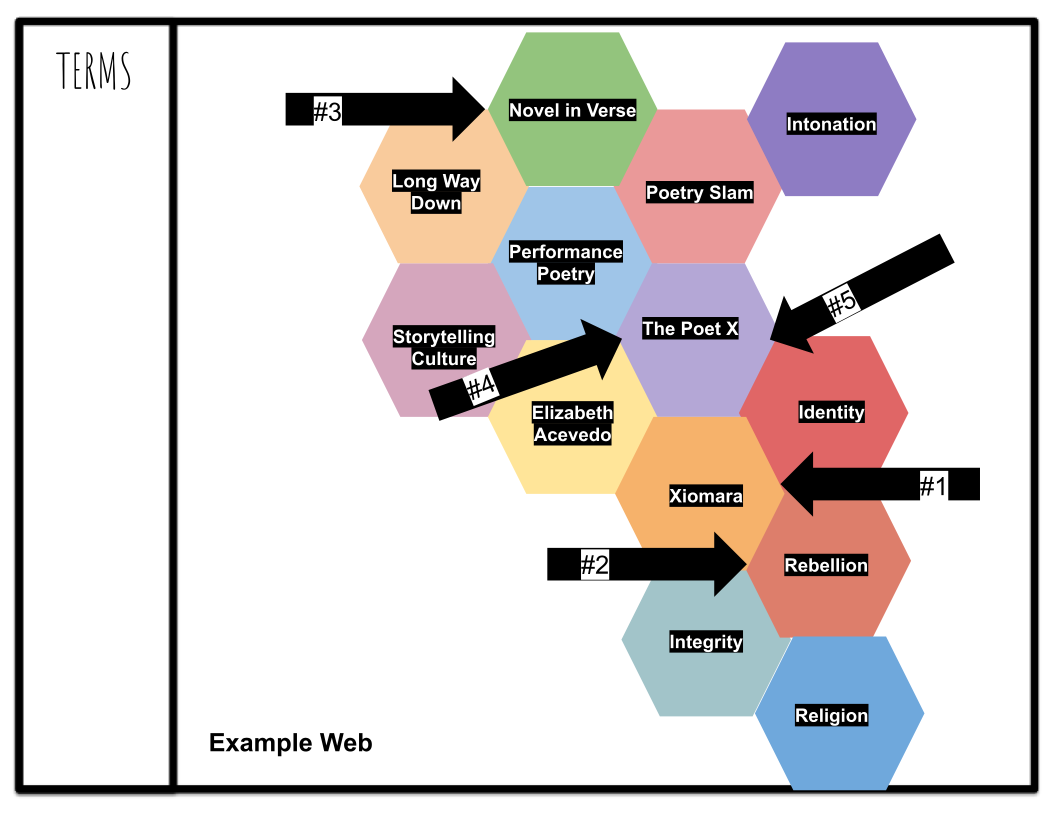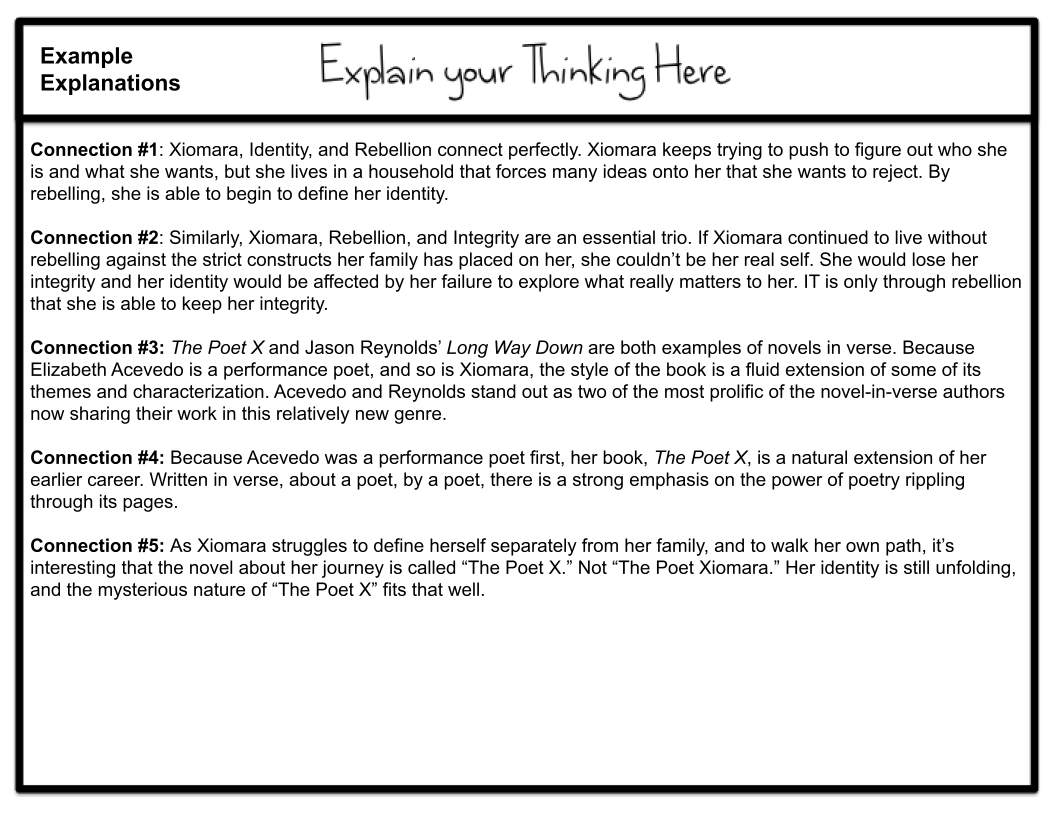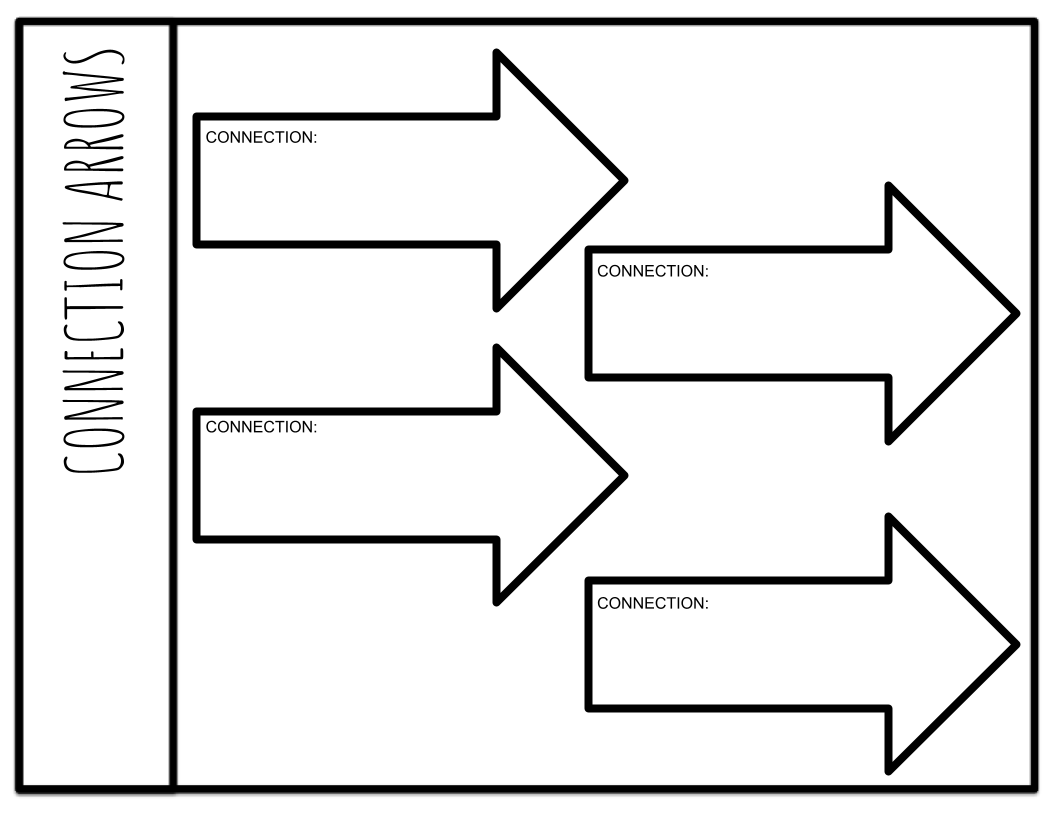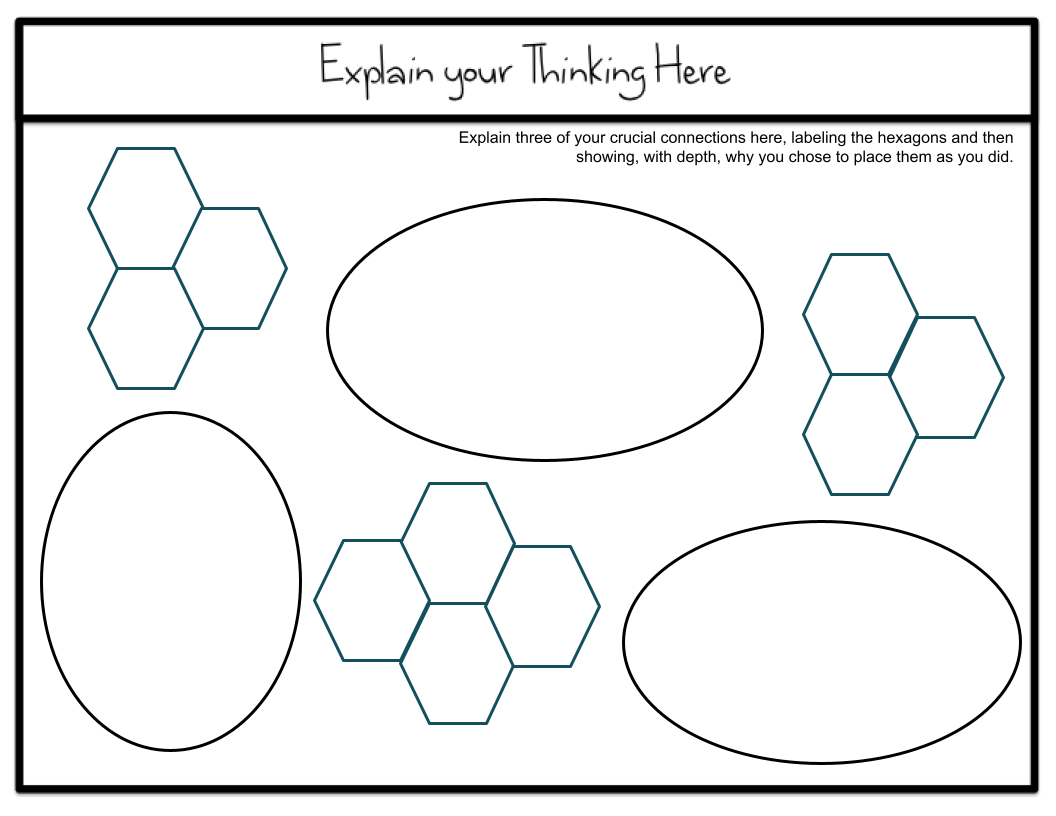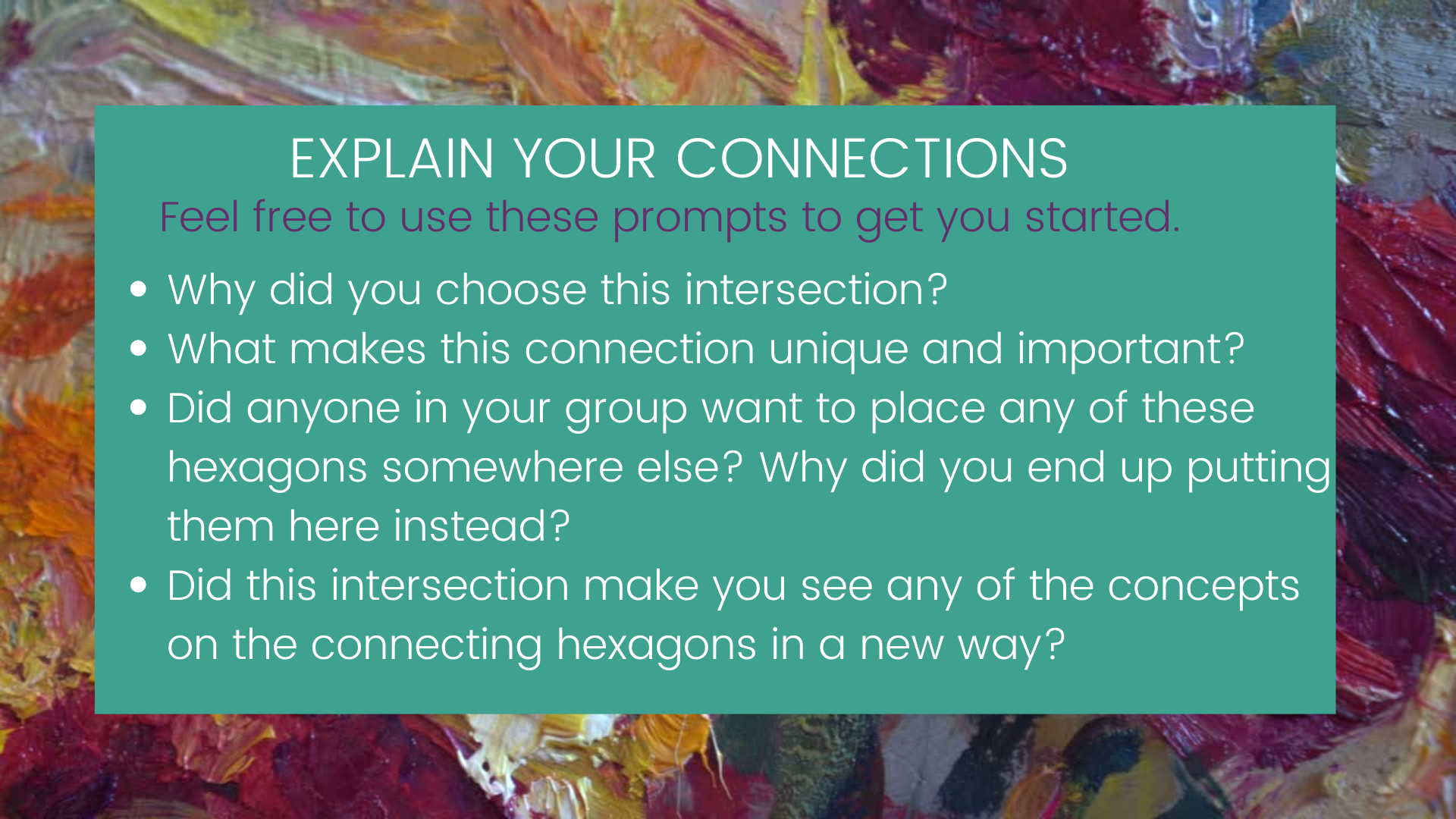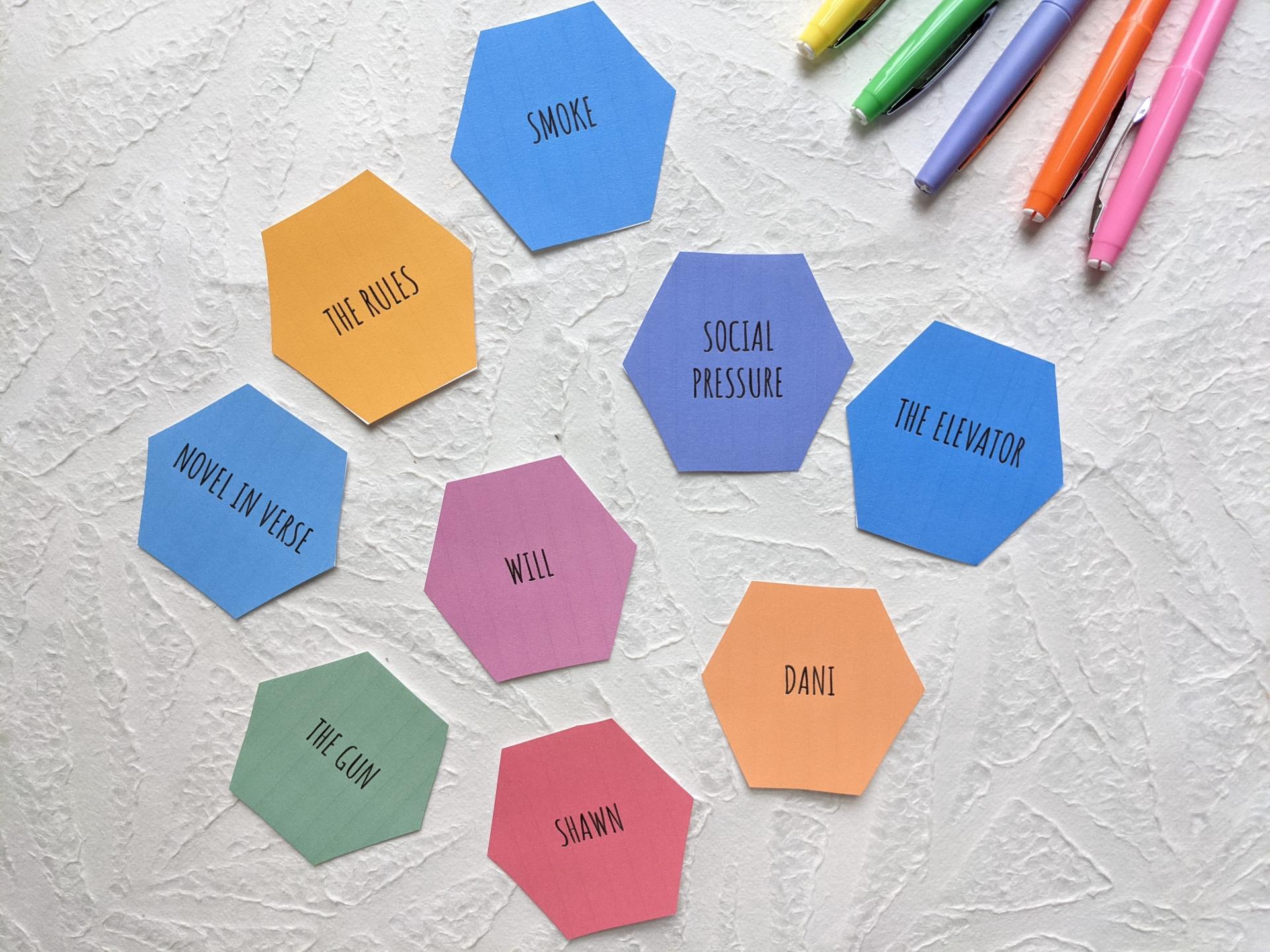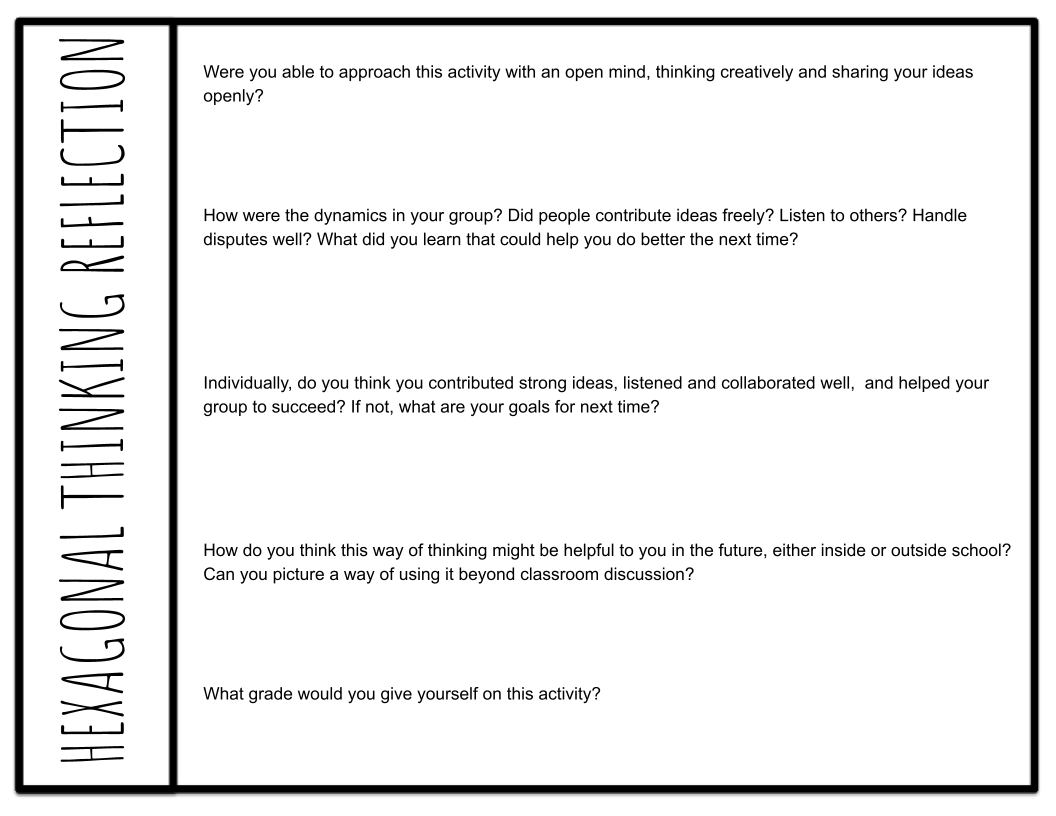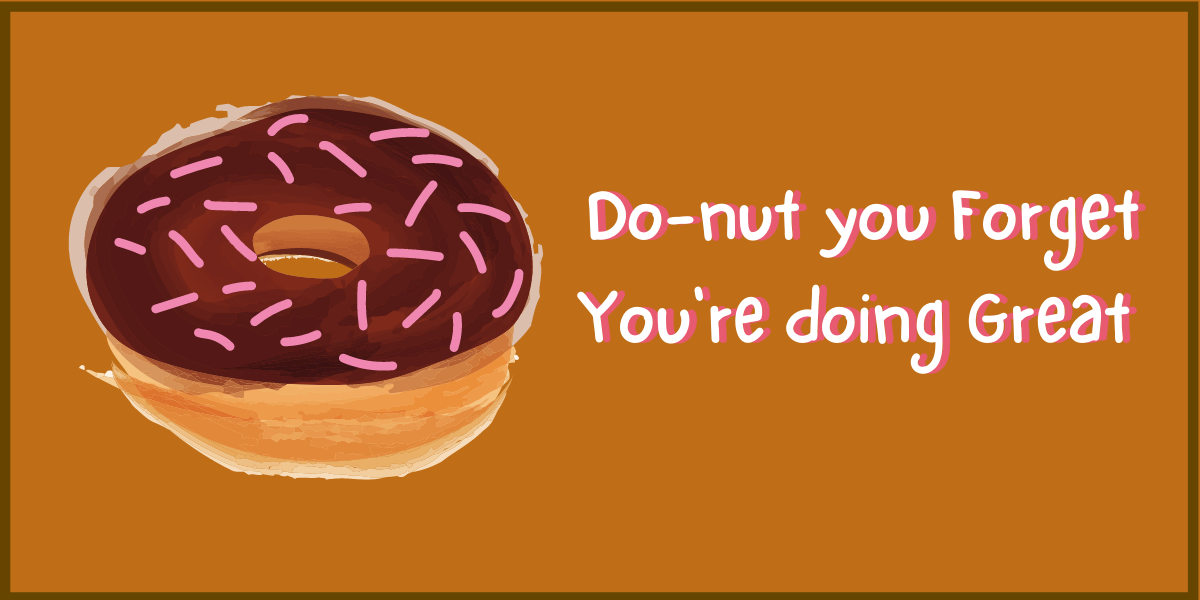
WELCOME TO THE
ALL ACCESS PAGE!
I thought it would be helpful for you to have all of your resources together on one easy-to-save page.
We've explored how to create your decks, how to introduce hexagonal thinking, how to help students present their ideas back to each other, and how to reflect on and assess a hexagonal thinking activity with your students.
On this page, you'll find a quick run-through of each day and resource, plus a PD certificate you may be able to use to receive professional development credit in your district.
Got a colleague you'd like to share this material with? Go ahead and forward on the link to this all-access page!
